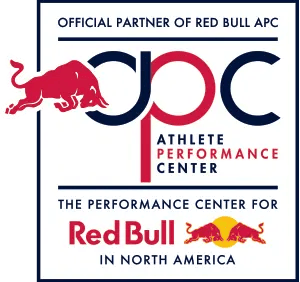Equestrianism is a high-risk sport — one in five riders will get injured at some point in their equestrian career, according to a study performed by the Department of Surgery at Oregon Health and Science University. As a spine surgeon, I see dozens of equestrian patients per year with injuries of all different levels of severity.
Video: Sagittal Imbalance Versus Equestrian Performance
Luckily, there’s something riders can do as a preventive against injury: ensure good postural balance. A rider’s core balance is essential to both preventing falls and severe injuries.
Most know balance is a vital part of horseback riding, but few realize just how much an imbalanced spine can affect your equestrian performance and health. I believe spinal alignment is more critical in equestrianism than in any other sport because the rider’s connection with their horse starts with the seat in the saddle as the primary means of communication, and spinal alignment and stability are the building blocks of that connection.
There is significantly better alignment documented in professional riders than their club-level counterparts, where imbalance issues are quite common, though – most of the time – easily correctable. It is not whether you have postural instability or not; but rather the degree to which you do. Nearly all club-level riders experience imbalance at a level that, if fixed, would improve their riding.
Imagine a plumb line running from the base of the rider’s skull to the connection between their lower back (lumbar) and their pelvis (sacrum) – this is the rider’s sagittal balance of their spine, and it's a vital component of their riding performance.
In a healthy spine, there are two front-to-back curves in the lumbar (lower) spine and the thoracic (middle) spine. If one of these curves becomes too pronounced or too flat, sagittal imbalance occurs.
There are two main types of sagittal imbalance: flatback syndrome and kyphosis. Flatback syndrome occurs when the outward curve of the thoracic spine is the only curve, and the center of gravity juts out too far forward. Kyphosis, on the other hand, occurs when a weak upper back leads to an undesirable rounding forward.
A healthy thoracic spine normally maintains an angle of 20 to 40 degrees forward, but when this angle deteriorates to 60 to 80 degrees, your body can no longer compensate by arching your lower back or pulling your head back. This results in pain in the lower back or neck, and an unstable seat for equestrian riders – meaning neither horse nor rider will be happy.
Other symptoms of sagittal imbalance include pain in the lower back, rounding of the mid-back, difficulty walking or facing forward while in an upright position, fatigue and difficulty performing daily tasks, and in severe cases, difficulty breathing.
When an equestrian rider comes to talk to me about sagittal imbalance, I tell them to imagine they’re sitting on a pilates ball: if you roll your weight back, that ball is going to shoot forward. If you roll your weight forward, the pilates ball is going to shoot back. It's the same when riding a horse: if you roll too far back, you're telling the horse to go forward and you will have to pull them back with your reins. A typical imbalance is when the thoracic spine comes forward and the neck comes up and it rolls your spine, which means you're fighting your horse the entire time.
Many people are slightly asymmetric, so understanding where you need to strengthen an alignment or make adjustments is critical to ensure your connection to the horse is in a neutral flat position to provide that subtle connection to the saddle that allows you to remain in control.
Patients can have their spinal balance evaluated with magnetic resonance imaging (MRI), computed tomography (CT) scans, or 3D imaging of the entire spine using an EOS system for reduced patient radiation doses and high image contrast.
Experts will use these images to identify and address any potential issues in the making, so equestrian riders can correct the issues identified and improve their connection with their horse.
Treatment for sagittal imbalance is usually non-surgical and is dependent on the condition and symptoms present. Building core strength and improving flexibility in both the upper and lower body through pilates, physical therapy, and soft tissue foam rolling, can correct a problem in the making and help riders repair emerging problems and unlock their full riding potential.
For kyphosis, treatment typically includes upper back exercises to decrease the rounding forward. For the thoracic spine (located in the upper and middle back), imbalances are commonly treated with postural exercises, but surgery may be required to correct scoliosis. Imbalances in the cervical spine (located in the neck region) and lumbar spine (located in the lower back) may require a disc replacement, where a surgeon removes a damaged or deteriorated spinal disc and replaces it with an artificial disc.
Although issues with sagittal imbalance can be detrimental to your equestrian performance, receiving treatment will have you back in the (balanced) saddle and riding at your best in no time.

About the author
Robert S. Bray, Jr., M.D. Nicknamed “Dr. Fix-It” by The Red Bulletin, Robert S. Bray, Jr., M.D. makes an art of helping the world’s most elite athletes return to push the boundaries of performance. The neurological spine surgeon, recognized globally for his thorough diagnoses and pioneering minimally invasive approach, is quickly redefining sports medicine, one champion at a time. Dr. Bray founded the state-of-the-art, multi-disciplinary DISC Sports & Spine Center (DISC) in 2006 located in Los Angeles, CA. Read more articles by Robert S. Bray, Jr., M.D..





